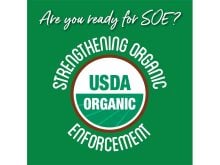SASKATOON — Crop organizations in the United States are taking a different approach to trade diversification.
“Value-added is what our farmers want us to work on,” Ryan LeGrand, president of the U.S. Grains Council, said during the U.S. Department of Agriculture’s recent Agricultural Outlook Forum.
“It’s getting tougher and tougher to compete in a commodity world like corn with all the competition that’s out there.”
Read Also

New coal mine proposal met with old concerns
A smaller version of the previously rejected Grassy Mountain coal mine project in Crowsnest Pass is back on the table, and the Livingstone Landowners Group continues to voice concerns about the environmental risks.
That means focusing on products such as ethanol.
The U.S. shipped out a record 1.75 billion gallons of the fuel worth US$4.1 billion in 2024 and is poised for more growth in the future.
That included 655 million gallons shipped to Canada.
Brazil used to be the top customer for U.S. ethanol, but the most it ever imported was 480 million gallons.
“Canada just really blew them out of the water,” said LeGrand.
He credited the USDA’s Agricultural Trade Promotion Program (ATP), which was created during U.S. president Donald Trump’s first administration, for the increased sales.
“It has produced results,” he said.
For example, it paved the way for access to the Japanese market, which purchased 140 million gallons of U.S. ethyl tertiary-butyl ether (ETBE) in 2024. It is a form of ethanol.
LeGrand said there could be huge growth in sales to that market because Japan has pledged to move to a nationwide 10 percent ethanol blend (E10) by 2030 and E20 by 2040.
The council is also excited to hear that Trump wants a trade deal with India in place by the end of the year because that is a market it has been trying to crack for three decades.
“We would love to see that,” he said.
India will soon become an E20 market for ethanol. It is supplying all of its own fuel, but that is resulting in a deficit of feedgrains.
India’s dairy sector is going to have to rely on imported feed. They won’t buy U.S. corn due to an aversion to genetically modified crops, but there should be opportunities for sorghum and distillers grains.
ATP has been replaced by the Regional Agricultural Promotion Program (RAPP). LeGrand expects it to further accelerate ethanol promotion, but he lamented that China, Mexico and Canada are three markets that have been excluded from that program.
Jim Sutter, chief executive officer of the U.S. Soybean Export Council (USSEC), said they are also exploring other ways to diversify beyond just selling to new countries.
When the European Union started talking about its sustainability concerns a decade ago, it was initially viewed as a threat to the U.S. soybean sector, but now it is seen as an advantage.
“We have kind of grabbed that bull by the horns,” he said.
The sector has developed the U.S. Soy Sustainability Assurance Protocol that has been widely recognized by international organizations.
Sutter said 72 percent of all U.S. exports now carry a verification that the soybeans were produced in a sustainable manner.
It has given the U.S. a major marketing advantage over soybeans produced in Brazil and Argentina, which have been penalized due to the destruction of rainforest.
The Sustainable U.S. Soy logo is being used by more than 100 companies on 1,000 SKUs in more than 20 countries.
USSEC is also using quality to diversify U.S. beans from South American beans, which are produced in a wet climate and have some nutritional deficiencies.
“Not everybody is going to care, but you have to find the right people who do care,” said Sutter.
He agreed with LeGrand that the ATP and RAPP programs have been a godsend.
“It allowed us to do a program that we have always been dreaming about but never had the resources to do,” said Sutter.
That is the Soy Excellence Center program, which provides training in emerging markets for how to get the best use out of feeding soybeans to livestock.
The program has reached more than 32,000 students in six countries in the past five years.
“I am sure that it’s going to translate to more affinity for U.S. soy and U.S. agriculture going forward,” he said.
Sutter said with all the talk about diversification, it is important to remember the value of maintaining existing markets such as China.
USSEC and other groups started doing market development work in China in 1982 out of concern that the U.S. was relying too heavily on Europe and Japan.
At that time, China was an exporter of soybeans. However, by 1995 it started importing and eventually grew to account for nearly 50 per cent of all U.S. exports.
“Maybe we overshot the runway a bit on our diversification efforts,” said Sutter.
The U.S. has been losing market share in China to Brazil, but China still accounts for slightly less than 40 per cent of all U.S. exports.
“Clearly, it’s not a market that we want to give up,” he said.
The U.S. is crushing more soybeans at home in recent years due to growing domestic demand from the biofuel sector.
That means the country is being forced to export more soybean meal, which is also a diversification tactic because meal goes to different markets than whole beans.


















